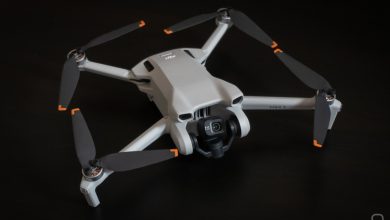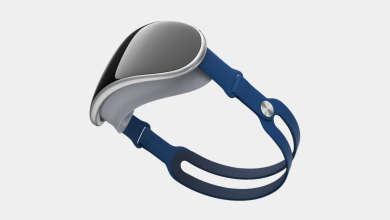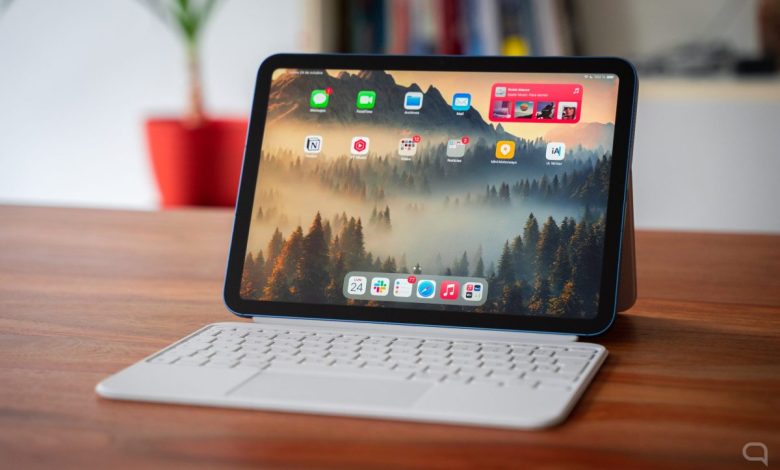
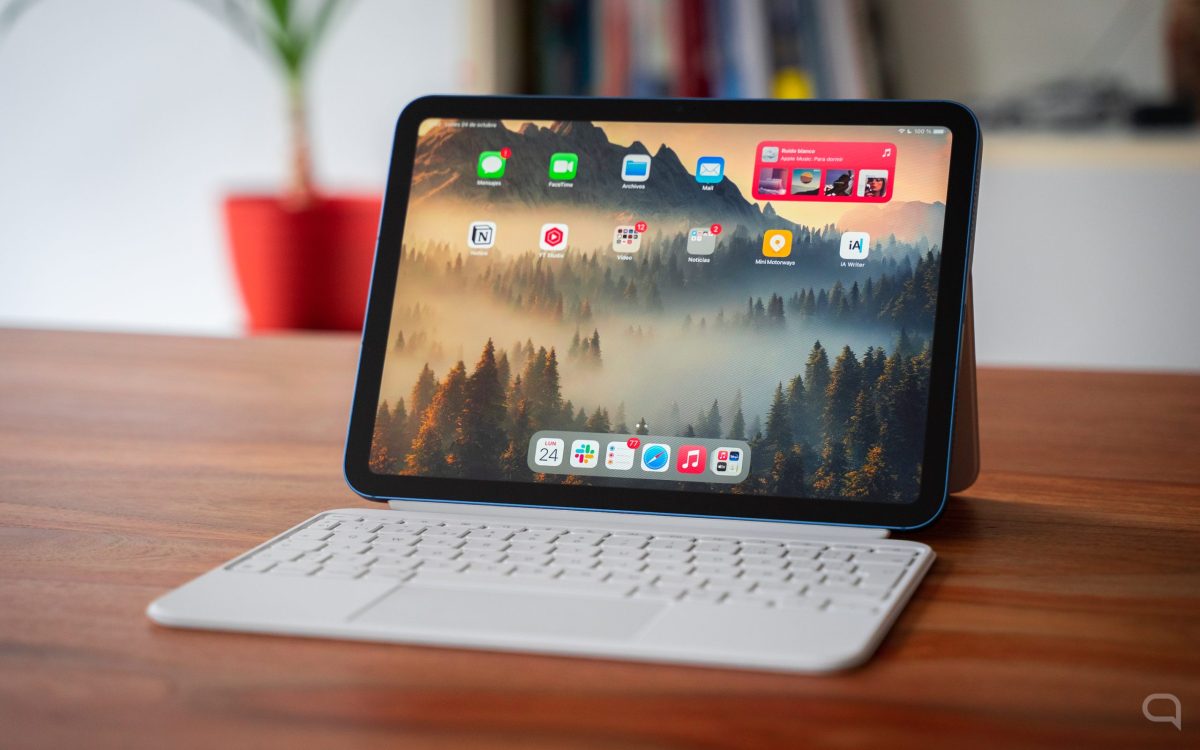 The tenth-generation iPad is a curious product. On the one hand, it brings multiple improvements compared to its predecessor: it is faster, it adopts the USB-C port, it brings a renewed design, it comes with a new keyboard with a trackpad, etc. For another, it is also more expensive than the previous generation. Even more so in Europe, a topic I will talk about later.
The tenth-generation iPad is a curious product. On the one hand, it brings multiple improvements compared to its predecessor: it is faster, it adopts the USB-C port, it brings a renewed design, it comes with a new keyboard with a trackpad, etc. For another, it is also more expensive than the previous generation. Even more so in Europe, a topic I will talk about later.
In the brand’s catalog, it is positioned in a gap that, until now, had not been covered: between the fifth-generation iPad Air and the ninth-generation essential iPad – which, unlike other occasions, will follow the sale.
That is to say: this new iPad does not replace the ninth generation in the Apple catalog, although its vocabulary makes us think that this is the case. The explanation from the strategic / business point of view is as follows:
- The chassis of the ninth-generation iPad is more than five years old. It is so cheap that Apple can sell it for $329 without sacrificing profit margin.
- By contrast, the chassis of the tenth-generation iPad is more recent. Its foundation is the 2018 iPad Pro. And when I talk about the chassis, I don’t mean just the exterior design. It also implies changing the iPad’s internal structure and using different components (batteries, antennas, sensors, etc.) that are probably more expensive than those of the previous model.
- According to the calculations that Apple has had to do internally, selling the tenth generation iPad as they have conceived it at the same price as the previous one is impossible. Perhaps it will be when its manufacture becomes cheaper over time. However, the only way to make this iPad a reality is to sell it at a higher price.
- The problem with launching a tenth-generation iPad for $120 more than its previous model is that you lose competitiveness in that entry market that is so juicy in the tablet ecosystem. Solution? Continue to fill that window with the ninth-generation iPad and position the new model somewhere between the entry-level and the M1-powered iPad Air.
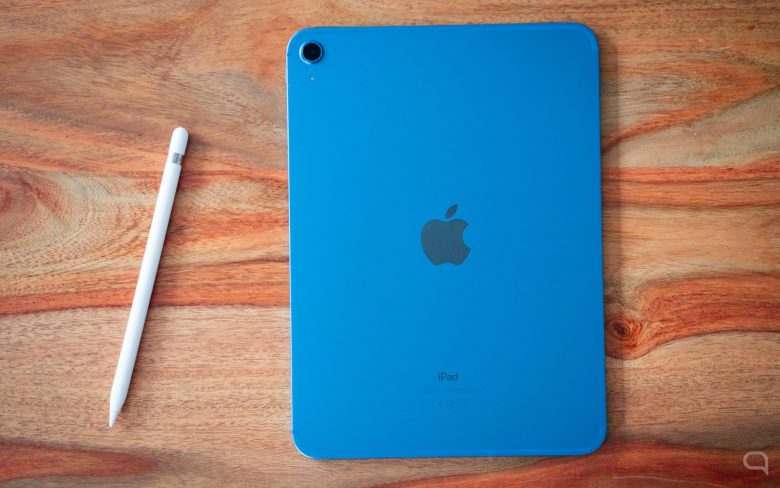
Why is it more expensive in Europe?
In the previous paragraphs, I have spoken mainly in dollars. And it’s not random. In an environment of changing currencies like ours, the most objective way to judge Apple’s strategy is by using its local currency.
As I explained in the iPhone 14 review, Apple determines the prices of its products in dollars, its local and reference currency. Subsequently, it converts to the rest of the coins –adding specific factors for each region, such as VAT, possible import costs, etc.–.
This essential iPad is more expensive than the previous model. In the US, which, as I said, is the reference market, the tenth generation goes on sale for $449, while the ninth was sold – and continues to be sold – for $329.
In addition to this price increase in Europe –because the product is more expensive to make– we have to add the euro-dollar exchange rate, which in 2022 significantly harms European consumers. Let’s do a calculation to exemplify this:
- The iPad is sold in the United States for $449 without taxation. If we use the exchange rate in effect on October 1, 2022 (0.96), the price is approximately 467 euros. If you add VAT, the resulting figure is 565 euros. The figure is close to 579 euros, for which Apple will sell.
- If we do the same calculation but using the exchange rate in force just one year ago (1.16), the price would be 387 euros, approximately. If you add VAT, the resulting figure is 468 euros.
That is to say: if the economic situation in Europe were the same as a year ago, this iPad would cost 111 euros less. It’s similar to what we saw with the iPhone: the dollar-euro conversion hurts European customers.
This, by the way, is not only happening in Europe. The yen, the Japanese currency, has also tumbled in recent months. And the same could be said, for example, of the yuan, the Chinese currency, or the British pound.
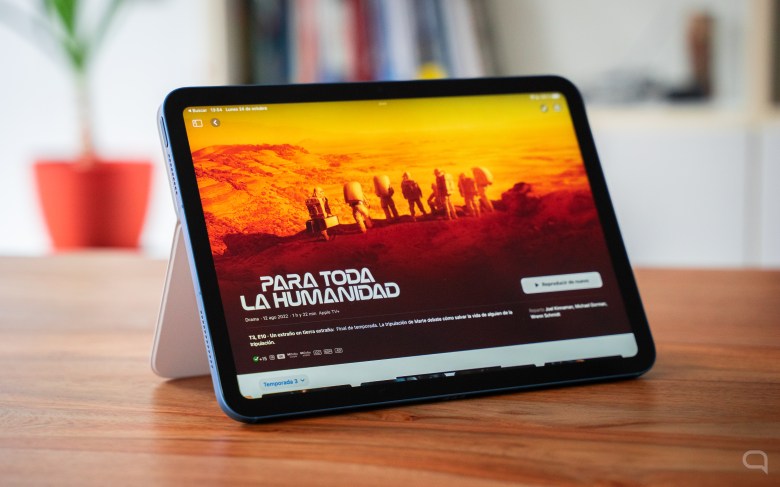
Life with the 10th generation iPad
After introducing the strategy, the price, and why it is much more expensive in Europe, let’s talk now about the iPad. Of the product itself.
This 10th-generation iPad, at its core, is a 4th-generation iPad Air. Just the one before the one they currently sell. It is not precisely the same, but it does have many common elements.
An example of this is aesthetics. Except for minor details, the appearance of this tenth-generation iPad is identical to the Air above. And that is fantastic news since said tablet, in turn, is based on the iPad Pro that the brand presented at the end of 2018 and whose design, in my opinion, is one of the best that Apple has produced in recent years. It is thin, weighs little, and transmits quality everywhere… An excellent design, I insist.
The processor is also the same as in the fourth-generation iPad Air: an A14 Bionic. A great chip that fits perfectly with the audience this iPad is aimed at.
On a day-to-day basis, I have to admit that I haven’t noticed a difference between this chip and the M1 in the iPad Air that I use often. I have had to do particular and demanding tasks – such as measuring the export time of a video or carrying out performance tests such as Geekbench – to perceive the difference between the M1 and the A14 Bionic. A difference that, numerically, is almost double in some aspects. However, Apple’s excellent work with its chips and software optimization makes the difference invisible daily.
The A14 Bionic has 4 GB of RAM, while the iPad Air M1 is accompanied by 8 GB. If you do everyday tasks, you don’t even know. The tenth-generation iPad has room to spare. Consuming series or movies, taking notes, writing documents, browsing the internet, opening several apps simultaneously… All of this is digested with great ease.
If, on the other hand, you make very demanding use of the machine – working on Procreate projects with hundreds of high-resolution layers or opening dozens of tabs in Safari while using other demanding applications, for example – that extra RAM, yes, it becomes more noticeable.
That said, it’s important to clarify that this is not the target audience for this 10th-generation iPad. Apple offers the iPad Air and the iPad Pro for those more demanding use cases. So it can’t be said that it’s a negative per se of the 10th-generation iPad. It is simply an implicit limitation due to the range to which it belongs that you must know to evaluate if it fits what you plan to do with this device.
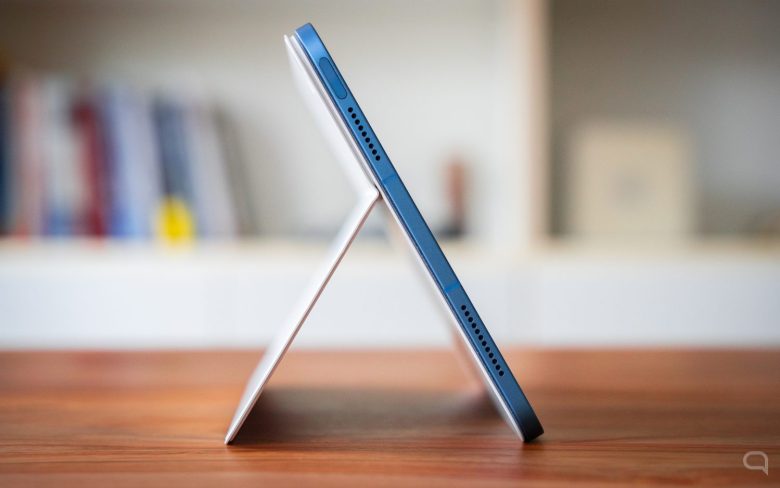
One negative surprise related to the A14 Bionic is that this 10th-generation iPad doesn’t support Stage Manager, the flagship feature of iPadOS 16.1. This option allows you to create workspaces with various floating windows that can be resized. It’s an approach to the flow of windows we’re used to in macOS that opens up a whole new world of possibilities for those who use the iPad for work and need multiple apps simultaneously.
On the other hand, Apple will implement this option in the iPad Pro with the A12X, which has the same amount of RAM (4 GB) and a more or less similar CPU (somewhat lower in single-core tests and slightly higher in multicore tests). ). I don’t know the reason behind this decision, but I have to admit that it surprised me. Fortunately, the rest of the multitasking options are available on this model.
As expected in an Apple product, the screen is of high quality—high pixel density, good brightness levels, good color calibration, etc. Of course: it is not the same as that found in the iPad Air. For example, it does not support the DCI-P3 space and is not laminated. None of them, yes, I think it is a significant deficiency considering the public for which this product is intended.
As far as connectivity is concerned, this model welcomes 5G –if the compatible version is purchased– and also USB-C. A more versatile connector, standard in the technology industry, and, without a doubt, better than the Lightning of the previous model.
The home button has also disappeared on this tenth-generation iPad, giving way to the gesture interface. And the fingerprint reader, like on the iPad Air, is now located above the power button.
Another exciting change is found in the front camera, which is now on the longest side, instead of at the top, as in the rest of the iPad. If you have used an iPad to make video calls while connected, for example, to a Magic Keyboard, you will know that the camera placement is not the best since it captures you from a strange perspective. On the other hand, this new model is not a problem since the sensor is located right in the center. The camera also supports center framing, so if you move, it automatically adjusts to keep your face centered. And, as in other models, it works like a charm.
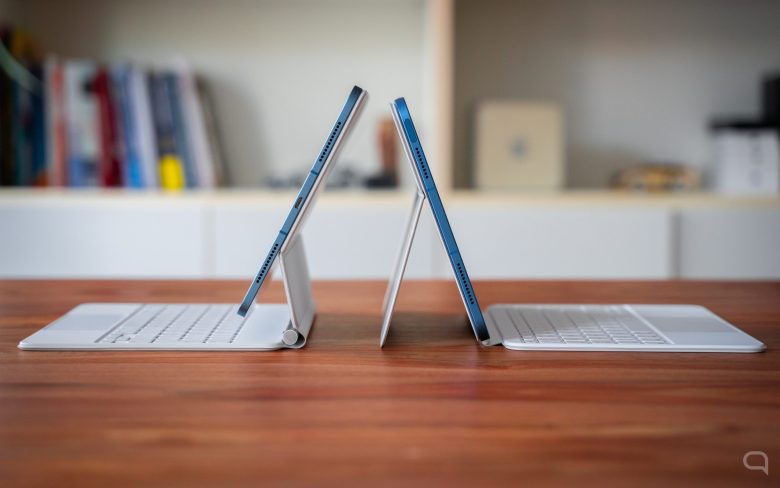
Let’s talk about the Magic Keyboard Folio.
This tenth-generation iPad comes with two accessories: the first-generation Apple Pencil and a new keyboard with a built-in trackpad that Apple has dubbed the Magic Keyboard Folio.
I must admit that the new keyboard with a built-in trackpad has convinced me. Both the touch and the travel of the keys are excellent, the precision of the trackpad is fantastic, the finishes are of quality, and the back support does a good job both holding the iPad and allowing you to adjust the degree of inclination and, in addition, it is made up of two independent pieces. Thanks to the latter, you can disconnect the keyboard but keep the back support, for example, watching a movie on a plane.



About this keyboard, I would like to make some additional notes:
- The keyboard for the 10th-generation iPad doesn’t have an extra USB-C port like the Magic Keyboard for the iPad Air or iPad Pro.
- The Magic Keyboard Folio takes up more space when placed on a surface than the Magic Keyboard for iPad Pro / Air due to the rear kickstand that supports the iPad.
- If you use the iPad on your knees, the Magic Keyboard on the iPad Pro / Air is more comfortable, without a rear kickstand, than the Magic Keyboard Folio on the 10th generation iPad.
- The Magic Keyboard Folio for the 10th-generation iPad has a larger trackpad than the iPad Air/Pro of the same size. It also has a row of function keys (change brightness, control music, do not disturb mode, etc.) that the other model does not have. They are pretty helpful, I must say.
- The difference between an iPad Air with its corresponding keyboard and this 10th-generation iPad with its Magic Keyboard Folio isn’t significant in weight or thickness.
- The keyboards are not interchangeable between the different iPad models since the tenth generation has the connection pins on the lower side, while the Pro and Air have them on the back. In other words, you can’t use this new keyboard with a Pro or Air, and you can’t use the original Magic Keyboard with the 10th-generation iPad.
- The keyboard costs 299 euros. I understand it is a quality accessory, but that price makes the set quite expensive (878 euros for the 64 GB Wi-Fi-only iPad combo with the addition above). And if you want to turn iPad into a productivity tool, you probably want to have it.
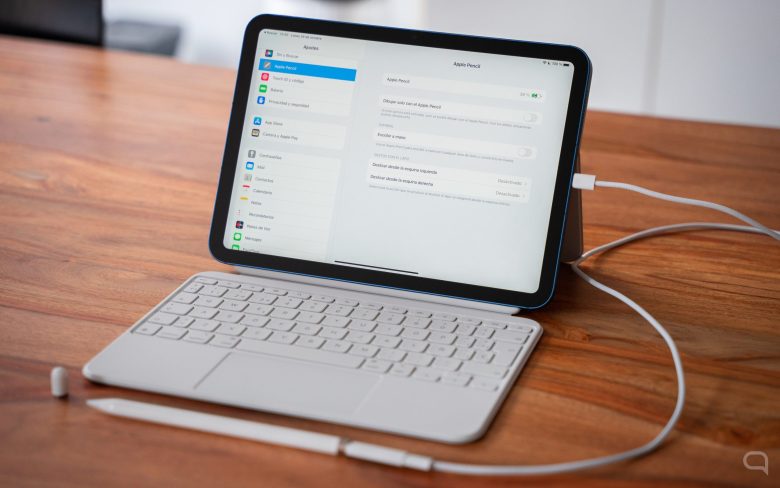
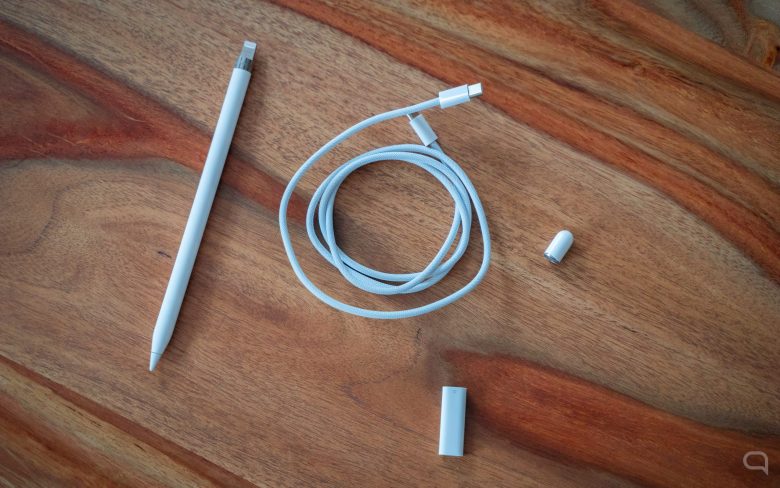
Let’s talk about Apple Pencil.
This 10th-generation iPad also supports the Apple Pencil. I am referring, of course, to the first generation, not the one sold for the iPad Air or Pro. This model has a different design, loses some functionality (such as gestures), and does not attach magnetically to the side of the tablet to charge.
So far, everything is in order. It is a slightly inferior pencil in some ways, but it is still a quality product that allows you to draw with great precision, as many artists have demonstrated in recent years. The problem is in the load or, instead, in how Apple has solved it.
The first-generation Apple Pencil, remember, has a Lightning connector, but this new iPad has a USB-C port. Therefore, connecting the Pencil directly to the iPad is impossible, as previous models allowed.
Taking into account that the option of bringing the second-generation Apple Pencil to this model is probably ruled out for economic reasons (the production cost of the iPad will likely be higher by incorporating the necessary mechanisms for such an accessory), there are only two alternative options:
- Throwing in the same first-generation Apple Pencil but with a USB-C port.
- Launch an adapter that connects the stylus above to a USB-C.
The ideal would have been the former, but Apple opted for the latter for economic reasons. I insist it is not the optimal solution, but it is accepted.
The straw that breaks the camel’s back is that this adapter is not a female Lightning to male USB-C. She is female in both cases! Therefore, you cannot directly connect the Pencil to the iPad. Yes or yes, you have to use a USB-C cable. And also, when you finish charging it, you must remove the adapter. Yes or yes if you want to put the cover that covers the Pencil port back on. I’m surprised that a company like Apple, known worldwide for its attention to detail, thought this was a good idea. And in case you’re wondering: it can’t be used while charging.
If you need this iPad to support the first-generation Apple Pencil instead of the newer model for economic or strategic reasons, at least develop a better adapter. For example: make the adapter a Lightning female to USB-C male adapter, and include a cap compatible with that USB-C male in the box. So not only do you not have to carry a USB-C cable to charge the pen if it runs out of battery, but you can also leave the adapter above permanently attached to the cell since you have a cap that fits with that USB-C.
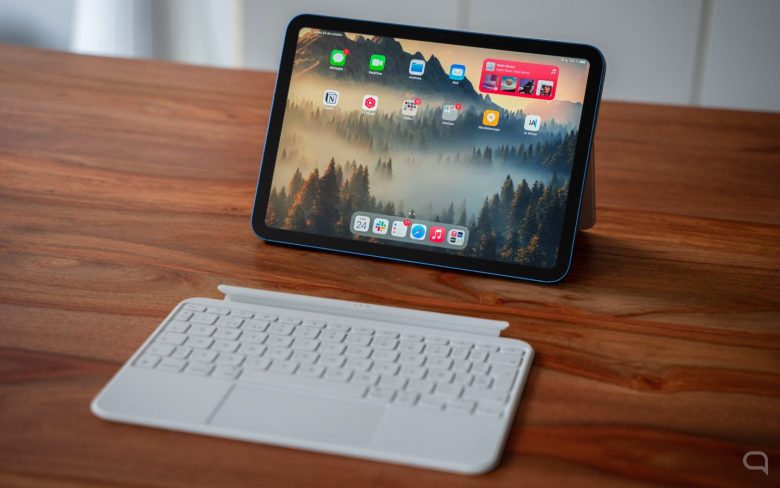
Is this iPad worth it?
As I said at the beginning of this text, this tenth-generation iPad is a peculiar product. As a machine, it’s compelling. Balanced, capable, versatile, attractive… Except for details such as what was mentioned about the Apple Pencil charging system or the absence of the Stage Manager, there is little to object to. I would have liked the dollar-euro exchange rate to be less harmful to European citizens, as it would be even more exciting, but it is not in the hands of Apple.
Of course: it is essential to judge this iPad as an intermediate product between the cheap iPad to which we had become accustomed and the iPad Air with M1, not as a replacement for the entry model – although its name makes us think so.
It seems impossible to make an iPad with this new design and features and sell it for the same price as the essential iPads of recent years. That’s why Apple continues to sell the ninth-generation model.
However, that does not mean that it is interesting to have an intermediate iPad for those people who want this design without the home button, are looking for a little more power but do not need an M1, and want to have a keyboard with a built-in trackpad to be able to work better. And yes, although it has certain limitations compared to a Mac or PC, the iPad is also a productivity machine.
In a way, this model is the culmination of a path that Apple started in 2018 with the iPad Pro launched at the end of that year, which brought many new ideas that are now entirely democratized by reaching the standard iPad.
